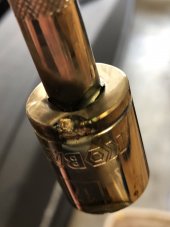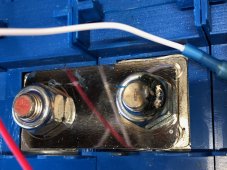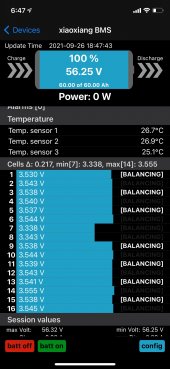birchfinnigus
New Member
- Joined
- Feb 18, 2021
- Messages
- 22
Totally newbie here. I'm building my first battery, 16S48v with Fortune cells. I just top balanced to 3.6v (took two weeks).
I was putting my BMS on, when I dropped the Ratchet. The socket head connected the positive and negative of two batteries, sparks flew and a flame shot up. I grabbed the wrench and pulled it off.
Inspecting the damage, it appears to be the nylon of the nylock nut that caught fire. The terminals look pretty clean. The socket itself melted in two places.
I tested the voltage, things seemed ok. So I finished assembling the BMS, and connected the wires.
The BMS now reports the two affected cells are lower than the rest of the pack.
I was putting my BMS on, when I dropped the Ratchet. The socket head connected the positive and negative of two batteries, sparks flew and a flame shot up. I grabbed the wrench and pulled it off.
Inspecting the damage, it appears to be the nylon of the nylock nut that caught fire. The terminals look pretty clean. The socket itself melted in two places.
I tested the voltage, things seemed ok. So I finished assembling the BMS, and connected the wires.
The BMS now reports the two affected cells are lower than the rest of the pack.
- Is this a short? I thought it might be, but I looked on the forums and other people's shorts seem to be really intense, like the leads of the batteries melting!
- How can I trouble shoot the two affected cells?
- What kind of problems can I expect to have in the future, and how do I identify them?
- Should I top balance again? (dismantle everything, put it back into parallel, and balance)






